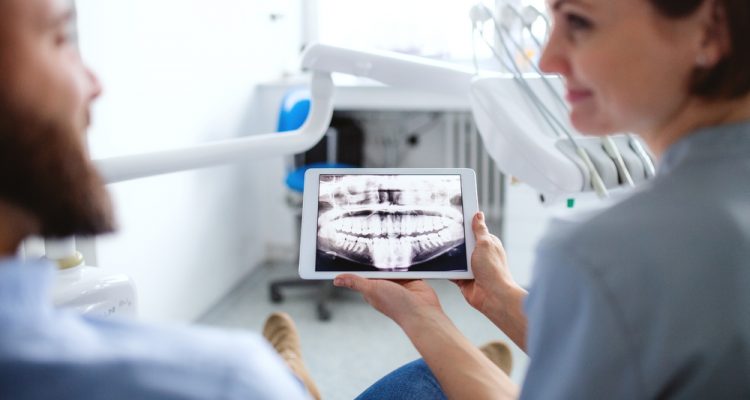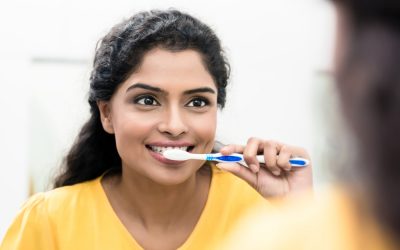If you go to the dentist’s office regularly, you’ve probably wondered why they need to take dental X-rays. After all, if your dentist can simply look inside your mouth to spot an issue, then why do they need pictures too?
X-rays (also called radiographs) play an essential role in good oral health because not all problems can be seen on a surface level. Imaging studies help your dentist get a deep look into all the nooks and crannies in your oral cavity. Keep reading to learn more.
Why Are Dental X-Rays Important?
Dental X-rays are an important diagnostic tool that allow your dentist to take proactive steps to identify and treat oral problems before they cause significant or permanent damage. X-rays provide a complete picture of the oral cavity that includes all 32 teeth down to the roots, gums, soft tissues and supporting bone. They help your dentist detect abnormalities, structural irregularities and places of decay that aren’t visible to the naked eye.
X-rays aid in identifying:
- Cavities and tooth decay
- Gum disease
- Cysts
- Abscesses
- Tumors
- Bone loss
- Missing teeth
- Impacted teeth
- Wisdom teeth
- Jaw disorders
- Bite disorders
- Teeth alignment
- Salivary gland or palate abnormalities
Using X-rays, your dentist can catch oral problems in the early stages and start treatment as soon as possible. Early detection and treatment prevent problems from worsening and causing permanent damage or tooth loss. For example, while mild gum disease (gingivitis) is incredibly treatable in the early stages, severe gum disease (periodontitis) is a serious infection that can lead to abscess development, bone loss and tooth loss.
4 Types of Dental X-Rays
There are several types of dental X-rays that provide your dentist with different views of the oral cavity. Here are the 4 most common:
1.) Bitewing X-rays. Bitewing X-rays provide a view of the crowns and the spaces between teeth. They’re used to detect cavities and the amount of decay present.
2.) Periapical X-rays. Periapical X-rays provide a full view of teeth from crown to root. Your dentist may use this view to study an isolated problem in more detail.
3.) Occlusal X-rays. Occlusal X-rays provide a view of an entire section of teeth in the upper or lower jaw. They’re used to study the bone structure in the jaw and detect impacted or emerging teeth. Occlusal X-rays are also used to check the health of the floor and roof of the mouth.
4.) Panoramic X-rays. Unlike bitewing and periapical X-rays, panoramic X-rays are taken from outside the mouth. They provide a view of the full oral cavity: teeth, upper and lower jaw and sinuses. This view is used to identify jaw disorders, bone irregularities, impacted teeth, wisdom teeth, cysts, abscesses and tumors.
Frequency
If you have consistently healthy dental checkups, you may only need new X-rays taken annually. If you have a history of gum disease or other oral disease, you may need X-rays taken more frequently for monitoring purposes.
If you’re a new patient at a practice, your dentist will take a full set of X-rays at your first visit to establish a baseline for your oral health. You’ll likely need more frequent X-rays taken early on while the dentist gets familiar with your mouth. Once a baseline is established, you’ll only need to have X-rays taken yearly or every 6 months.
Children also need more frequent X-rays taken, because their teeth and oral structures grow and change very quickly during adolescence.
Risks
While dental X-rays do contain a small amount of radiation, there is little risk involved. Exposure levels are very low, and the procedure is considered safe for adults and children. As a safety precaution, your dentist will have you wear a leaded cover over vital organs to protect them from potential damage.
However, inform your doctor if you are pregnant or think you may be pregnant. You should not have any X-rays taken during pregnancy, because no amount of radiation exposure is safe for developing fetuses.
Contact Boyett Family Dentistry to Schedule a Cleaning
Visiting the dentist for routine cleanings and exams is one of the best steps you can take to protect your oral health. To make your next appointment, call us at 863-294-9200 or fill out a message form online.






